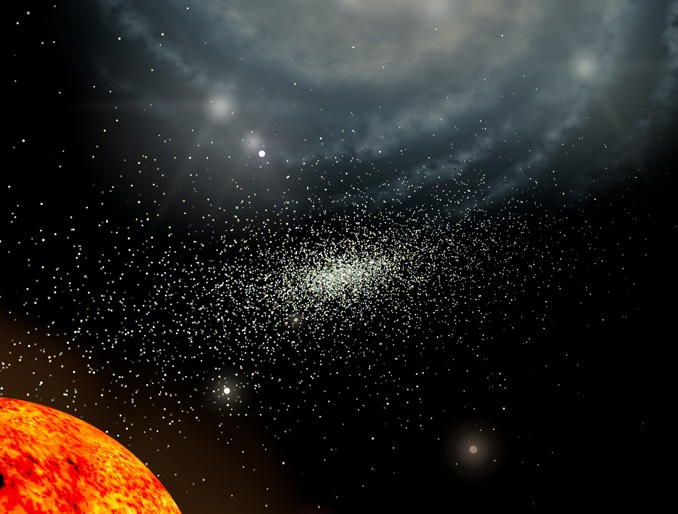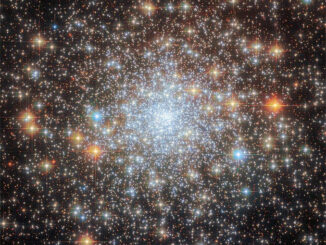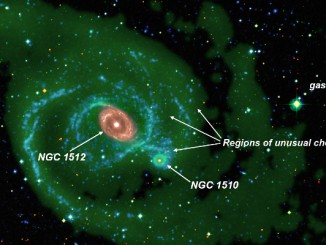
Astronomers have found the remnants of a globular cluster that was ripped apart by the Milky Way’s gravity some 2 billion years ago. Spectral analysis of light from the globular’s spread-out remnants, known as the Phoenix Stream, shows they may be from a generation of globular clusters that formed in the very early universe, in a very different environment, than other known globulars.
“We were really surprised to find that the Phoenix Stream is distinctly different to all of the other globular clusters in the Milky Way,” said Zhen Wan of the University of Sydney, lead author of a study published in the journal Nature. “Even though the cluster was destroyed billions of years ago, we can still tell it formed in the early universe.”
The star stream is located in the southern Phoenix constellation and was observed using the Anglo-Australian Telescope in a project known as the Southern Stellar Stream Spectroscopic Survey Collaboration. The “S5” collaboration is focused on mapping the motion and chemistry of star streams in the southern sky.
“The globular cluster remnants that make up the Phoenix Stream were disrupted many billion years ago, but luckily retain the memory of its formation in the very early universe, which we can read from the chemical composition of its stars,” said Carnegie astronomer Ting Li.
The Milky Way features about 150 known globular clusters, huge, roughly spherical assemblies of a million stars or more that form a sort of halo around the galaxy’s core. Globular clusters seen today feature an enriched abundance of heavy elements cooked up in earlier stellar generations.
But stars in the Phoenix Stream have a much lower abundance of heavy elements than all the other known globulars, indicating they formed in a different environment. The Phoenix Stream, in fact, may be one of the final remnants of that earlier generation.
“One possible explanation is that the Phoenix Stream represents the last of its kind, the remnant of a population of globular clusters that was born in radically different environments to those we see today,” Li said.
The researchers suggest the earlier generation of globular clusters were steadily broken apart by the Milky Way’s gravity. But their remnants may live on as faint streams of stars that eventually will dissipate.
“There is plenty of theoretical work left to do, and there are now many new questions for us to explore about how galaxies and globular clusters form,” said co-author Geraint Lewis, also of the University of Sydney.



